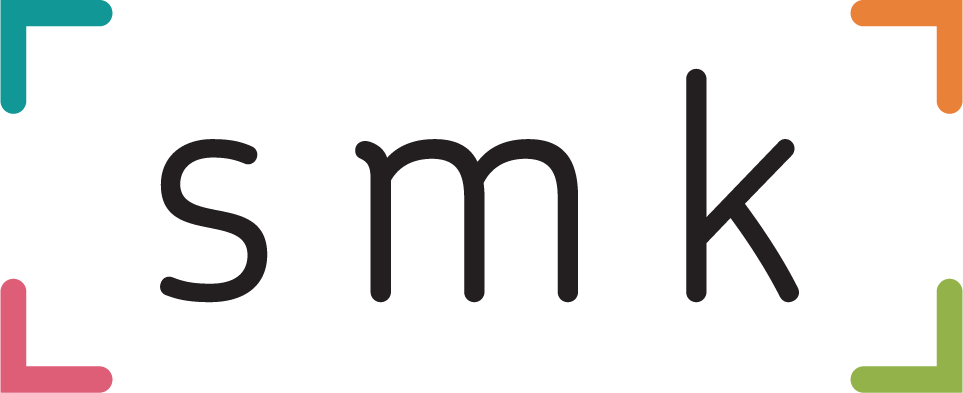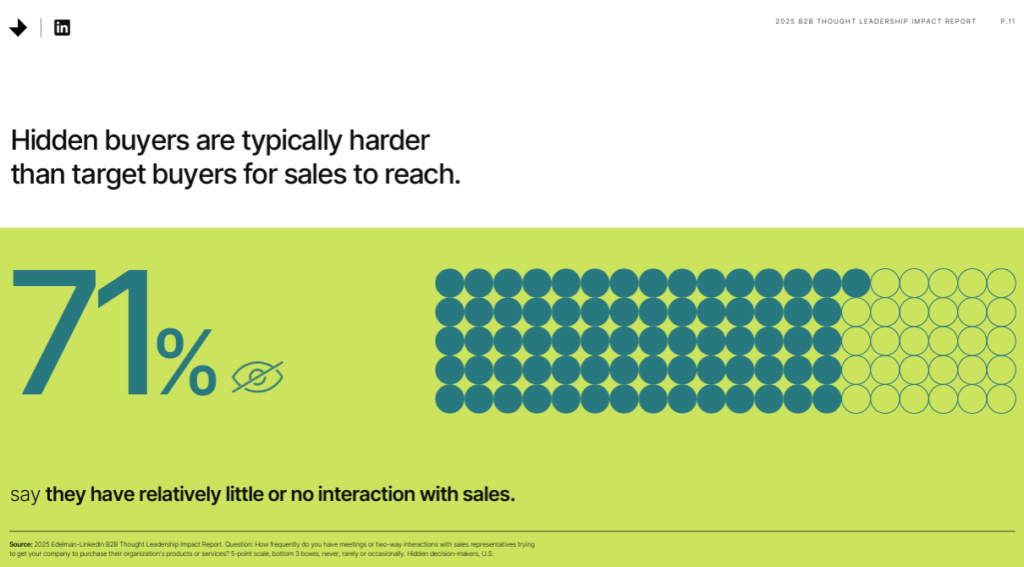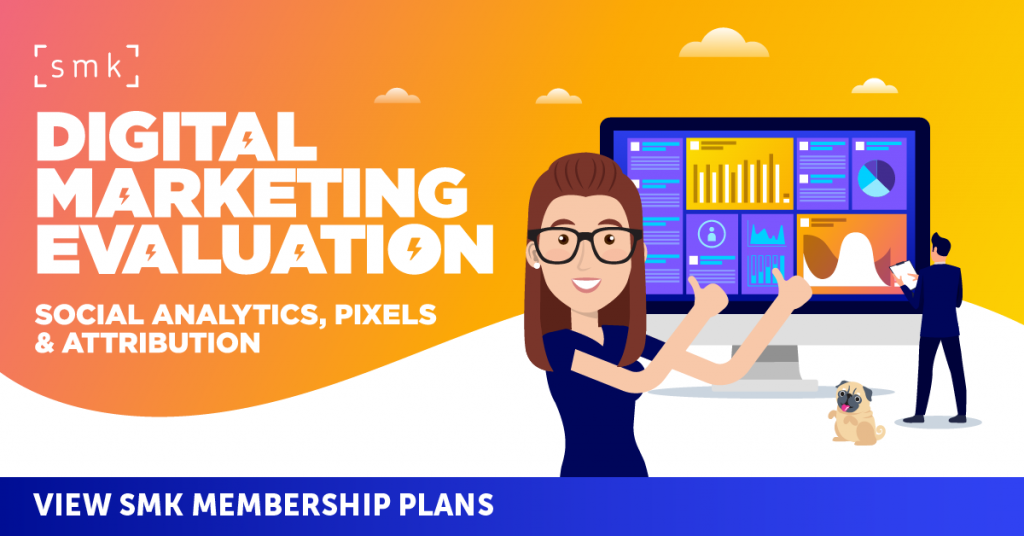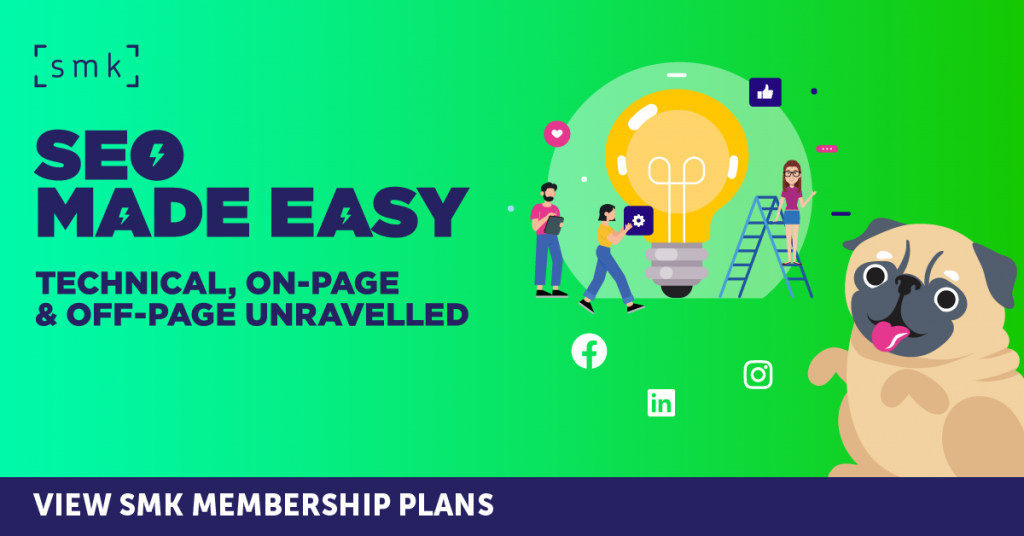Too many deals fall apart behind closed doors — and marketers are left guessing why.
LinkedIn and Edelman’s 2025 B2B Thought Leadership Impact Report sheds light on the overlooked stakeholders quietly shaping outcomes: target buyers and hidden buyers.
-
Target Buyers are subject matter experts. They are the IT leads, marketing heads, or technical users who understand your solution in detail and assess fit and functionality.
-
Hidden Buyers include stakeholders from finance, legal, procurement, compliance and operations. They often have final decision authority or veto power, yet they are not specialists in your product category and are typically invisible to sales.
Together, these two groups sit at the heart of modern B2B buying. The report explores how thought leadership influences both groups, and especially how to engage hidden buyers who are difficult to reach through traditional marketing or sales.
Why Hidden Buyers Matter More Than You Think
Hidden buyers account for a large share of stalled or lost B2B deals. More than 40% of opportunities break down due to internal misalignment, often driven by overlooked voices behind the scenes.
These stakeholders do not attend demos. They do not engage with sales. But they do consume content. In fact, 63% of hidden buyers spend more than one hour per week reading or viewing thought leadership, almost identical to the 64% of target buyers who do the same.
The takeaway: if you are not building content for hidden buyers, you are missing key decision-makers.
Thought Leadership Is Their Preferred Channel
Sales teams rarely engage hidden buyers directly. A full 71% of them report limited or no interaction with vendor sales reps. This creates a significant blind spot.
Yet 95% of hidden buyers say that strong thought leadership makes them more receptive to sales outreach. For many, it is the first and only exposure to a brand’s thinking. That makes content a critical channel for building trust and opening doors.
Smart Content Beats Traditional Marketing
Thought leadership beats product sheets and brochures. Among hidden buyers, 71% say it is more effective than traditional marketing at communicating a vendor’s value. Another 64% trust it more than standard marketing materials when evaluating capabilities.
This audience uses content to assess your competence, credibility and relevance. If you are not providing quality thought leadership, your competitor might be.
Challenger Thinking Wins Attention
Content that blends in will not work. Hidden buyers are actively looking for new perspectives. In fact, 91% say the best thought leadership helps them uncover problems or opportunities they had not recognised. Another 86% prefer content that challenges their assumptions.
These buyers value bold, opinionated thinking over safe, recycled ideas. Insight must lead, not follow.
Content Can Neutralise Brand Bias
One of the report’s most strategic insights is that strong content can reduce the importance of brand familiarity. A full 53% of buyers — across both groups — say that when thought leadership is high quality, brand recognition matters less.
Moreover, 79% of hidden buyers say they are more likely to champion a vendor during the RFP process if that vendor consistently publishes high-quality thought leadership.
This creates a major opportunity for challenger brands. You do not need the biggest logo in the room if you have the sharpest point of view.
Content Must Be Human and Accessible
The tone and format of your content matter as much as the message. Hidden buyers want content that is approachable and easy to digest:
-
60% value unique formats or visual styles.
-
57% prefer quick, accessible takeaways over long academic-style papers.
-
65% favour a human, conversational tone over a formal, intellectual voice.
Dense white papers, jargon-heavy reports and overly polished sales decks are unlikely to resonate. What works is clarity, insight and a touch of personality.
What Senior Marketers Should Do Now
If you are not targeting hidden buyers with your content, you are missing the people who can make or break a deal.
Here is what B2B marketing leaders should prioritise:
-
Target both buyer types. Build content for experts and for non-specialist decision-makers.
-
Map internal blockers. Understand the friction points that slow down deals and speak to them.
-
Reframe problems. Use content to challenge assumptions and shift the conversation.
-
Modernise formats. Prioritise explainers, playbooks, visual formats and snackable guides.
-
Build credibility through ideas. Let your thinking, not your tagline, do the heavy lifting.
In complex buying environments, thought leadership is not a brand play. It is a revenue lever. Hidden buyers are not an optional audience. They are essential.
If your content is not reaching them, your pitch never even makes it to the real decision table.




RECOMMENDED FOR YOU
LinkedIn Reverts Algorithm After Recency Backlash
LinkedIn has confirmed it is rolling back recent feed…
LinkedIn has confirmed it is rolling back recent feed…
LinkedIn Data Shows Creators Now Drive B2B Trust
New research from LinkedIn reveals a significant shift in…
New research from LinkedIn reveals a significant shift in…
LinkedIn Expands Video Ads With First Impression and BrandLink Formats
LinkedIn is deepening its focus on video, positioning itself…
LinkedIn is deepening its focus on video, positioning itself…